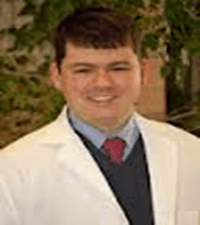"PALM" refers to these structural causes of AUB.
What are Polyps, Adenomyosis, Leiomyoma, Malignancy/hyperplasia?
A large meta-analysis showed that this percentage of patients with AUB had intrauterine abnormalities.
AUB accounts for this percent of outpatient visits to a gynecologist.
What is ~30%?
(Note: >70% of all gyn consults in perimenopausal and postmenopausal patients)
Laboratory assessment for AUB should include these tests (name at least 4).
What are:
1. Pregnancy test
2. TSH
3. CBC
4. Pap test
5. +/- Chlamydia
The mechanism by which progestins improve HMB.
What is stabilizing the endometrial lining, restricting growth (antagonizing estrogen)?
Note: A progesterone withdrawal can also allow for organized sloughing.
"COEIN" refers to these nonstructural causes of AUB.
What are Coagulopathy, Ovulatory dysfunction, Endometrial, Iatrogenic, Not yet classified?
The presence of cyclic bleeding usually confirms the presence of this.
What is ovulatory cycles?
These are normal menstrual bleeding parameters.
What is bleeding Q21-35 days x 5 days?
Heterogenous endometrium, myometrial cysts, asymmetric myometrial thickness, and subendometrial echogenic linear striations.
What are US findings that support the diagnosis of adenomyosis?
Lupron treatment is usually limited to 6 months because of this side effect.
What is bone loss?

Who is Eric Levens?
Thyroid dysfunction can cause AUB by this mechanism.
What is due to similarity in structure of TSH to FSH and LH, and presence of thyroid hormone receptors on ovaries, thyroid hormones can affect menstrual cycle by direct impact on ovaries, or through impact on SHBG, prolactin and GnRH?
Mechanisms for ovulatory AUB include these (name at least 2)
Per ACOG, younger patients should have an EMB if they meet any of these criteria (name at least 3).
What is Persistent AUB, inadequate response to medical management, history of unopposed estrogen exposure (i.e., obesity or PCOS)?
Otherwise- all pts over age 45
The treatment of choice in hemodynamically unstable patients with acute heavy bleeding.
What is uterine curettage?
Note: other option is IV CEE 25mg IV q 4-6hrs x 24 hrs
Bonus question: when is this ok?
The PALM-COEIN system uses these terms instead of menorrhagia and metrorrhagia.
What are Heavy Menstrual Bleeding (HMB) and Intermenstrual Bleeding (IMB)
This is the mechanism by which anovulation causes AUB.
What is Unopposed estrogen?
No ovulation->no corpus luteum-> no progesterone secretion->continual endometrial proliferation->no P-withdrawal induced shedding and bleeding
Initial screening for an underlying bleeding disorder should include a history of HMB since menarche OR 1-2 of the following.
What is:
One of the following: PPH, surgery-related bleeding, bleeding associated with dental work
Two or more of the following: bruising or epistaxis 1-2/month, frequent gum bleeding, FH of bleeding symptoms
Substantial evidence suggests that this imaging modality is superior to TVUS to detect intracavitary lesions.
What is SIS?
NSAIDS may improve heavy menstrual bleeding by up to 50% by this mechanism.
What is downregulation of prostaglandins?
Classification system that defines bleeding abnormalities by bleeding pattern and etiology.
PALM-COEIN
This percent of patients (at any age) who present with HMB will have an underlying bleeding disorder.
What is 20%?
The most common cause of AUB in adolescents (age 13-18 years).
What is Immaturity of the hypothalamic-pituitary-ovarian axis?
von Willebrand factor, ristocetin cofactor, hematology consultation
What is the initial workup for all patients with a positive screen for bleeding disorders?
A trial of therapy (without complete diagnostic evaluation) is appropriate for these patients.
Who are patients without increased risk of hyperplasia, neoplasia, or structural abnormalities (i.e., adolescents)?